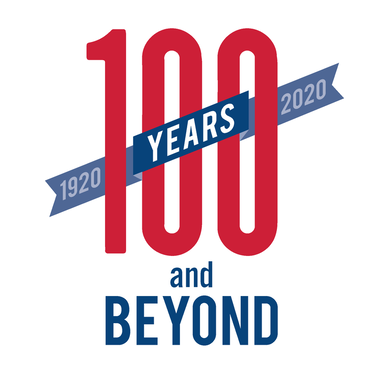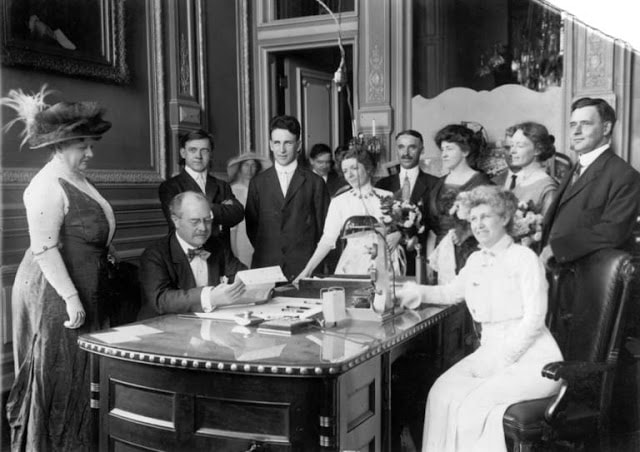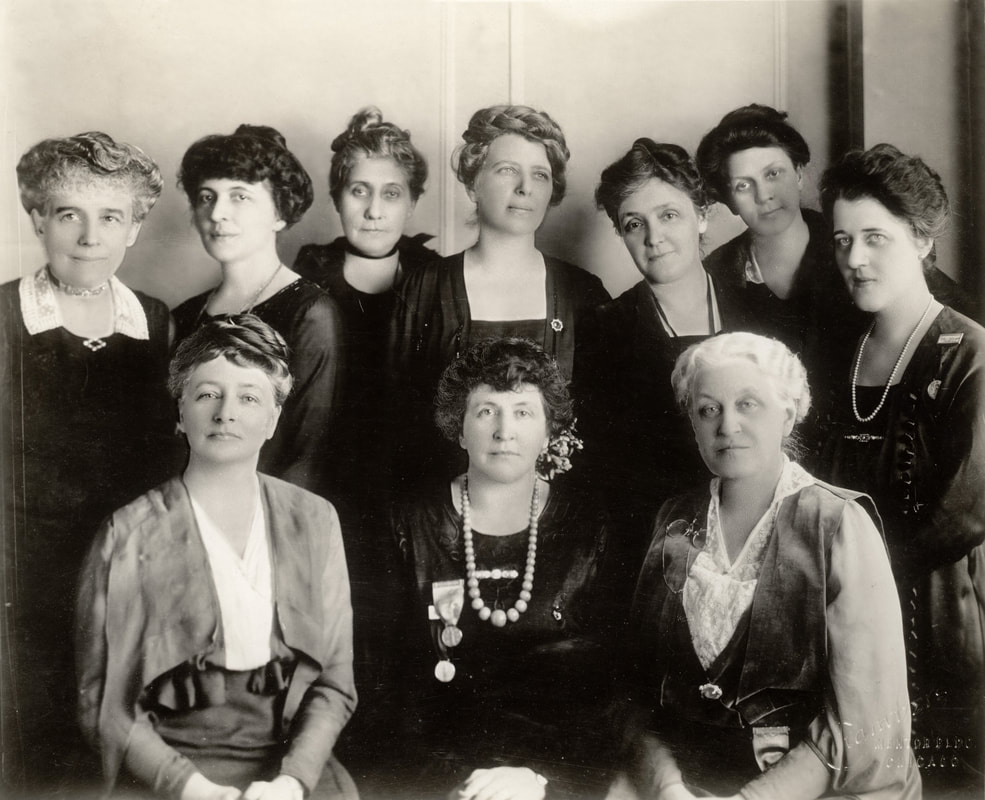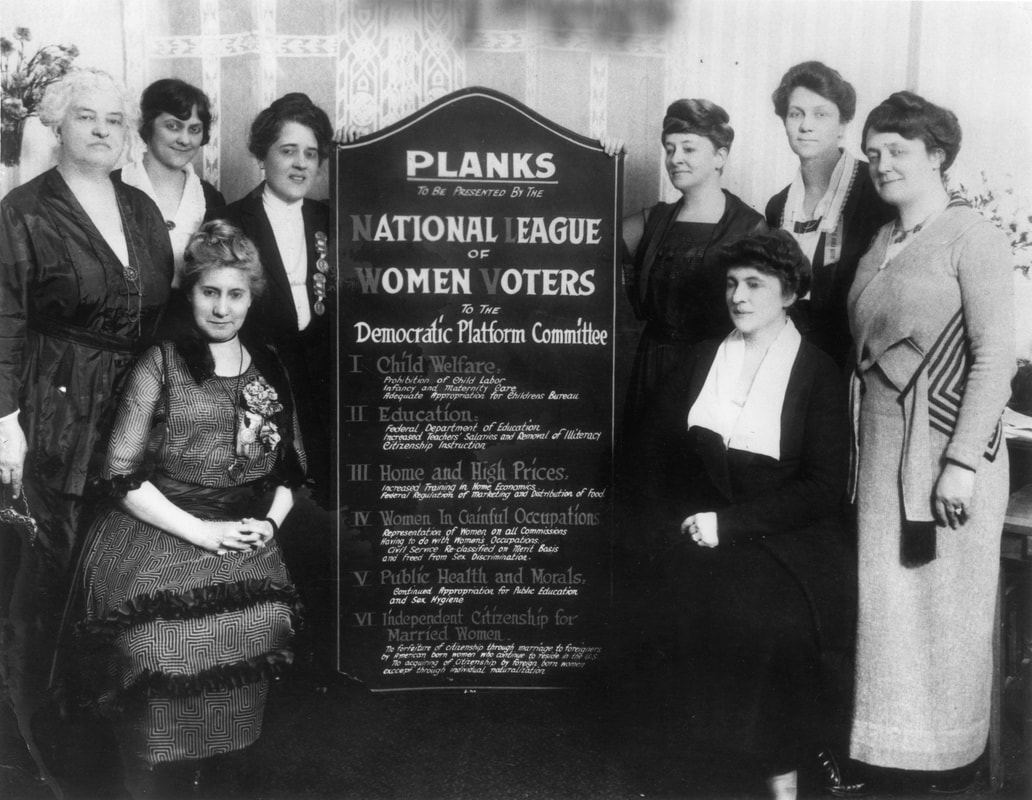100 Years Strong
|
League at 100
|
Pictured above: Governor Dunne is signing the 1913 law. Governor Dunne was not born in Peoria, but did grow up in Peoria. He is known for being the only person to have been Governor of Illinois and Mayor of Chicago. (Not at the same time, of course.)
Pictured above: 1920 Board of Directors
Pictured above: 1920 Democratic Convention
|
Illinois Women Gain the Vote in 1913
In 1913 Illinois became the first state east of the Mississippi to give women the right to vote. It was a limited vote, but a powerful one. Illinois women were able to vote in all elections where it was not specifically prohibited by state law, and this included choosing Presidential Electors, as well as filling various Municipal and Township offices. Why 1913? Several factors were in play that year but a big one was a change in leadership and tactics in the Illinois Equal Suffrage Association. Evanstonian Catharine Waugh McCulloch was an attorney who had written the suffrage bill and faithfully carried it to the Illinois legislature for 20 years, but each time legislators rejected it. McCulloch had developed the strategy for partial suffrage in the 1890s and had served for more than 20 years on the Illinois Equal Suffrage Association Legislative Committee. The new leadership that took charge in 1913 was younger, more socially connected and more conservative, and they brought with them a new approach. They decided to blend public events, like the auto tours and parades. with a “quiet hunt” for votes in the legislature, rather than an active and open legislative campaign. This new group was led by Grace Wilbur Trout from Oak Park. Read the full article compiled by Lori Osborne (Member, League of Women Voters of Evanston) as a PDF (Click here.) A Brief History of the Women's Suffrage Movement in Illinois
The Illinois women’s suffrage movement began in 1855 with the formation of the state’s first suffrage association in Earlville, a small town in LaSalle County west of Chicago. Suffrage conventions held in 1869 linked early Illinois suffrage activism to the national movement, and resulted in the formation of the first statewide suffrage organization, the Illinois Woman Suffrage Association (IWSA). The national suffrage movement was sharply divided in the years following the Civil War over issues and strategies, including whether African-American men should be granted suffrage in the 15th Amendment. In addition, some suffrage activists believed that the way to attain suffrage was through a state-by-state approach and partial suffrage measures. Others pressed for a federal amendment granting full suffrage, emphasizing the vote as a woman’s constitutional right of citizenship. Reconciliation between the groups would not take place until the formation of the National American Woman Suffrage Association in 1890. In 1891, the Illinois state legislature passed a law allowing women to vote for elective school offices. This renewed suffrage activism in the state. Under the leadership of Elizabeth Harbert, the IWSA adopted a new name, the Illinois Equal Suffrage Association (IESA), and transformed its mission as well from “political equality with men” to “political enfranchisement of women.” In 1894, the elite Chicago Woman’s Club established a separate organization to work for the vote, the Chicago Political Equality League (CPEL). Read the full article compiled by Lori Osborne (Member, League of Women Voters of Evanston) as a PDF (Click here.) |




